YouTube statistics in 2020 show that—spoiler alert—YouTube continues to be larger than all the other social media platforms. (And every other site, too, beyond Google.)
Whether you are a first-time creator seeking to develop your YouTube subscriber or view count, or an experienced video marketer looking to improve your brand’s video views on YouTube, step one towards mastering this platform is getting a handle on the numbers. Not to mention staying updated with them.
Below, we have got the Youtube statistics in 2020 numbers: who’s using Youtube? How are they using it? And what does that mean for business?
YouTube user statistics
1. YouTube has 2 billion logged-in users every month
YouTube’s user base continues to be rising every year. The Youtuber population was only 1.8 billion in May 2018.
2. 73% of adults in the U.S. use YouTube
These Youtube statistics in 2020 show that’s more than Fb (69% of American adults). And it’s nearly twice as much as the next runner-up, Instagram (37%).
YouTube is the most prevalent online platform in America pursuant to Pew Research.
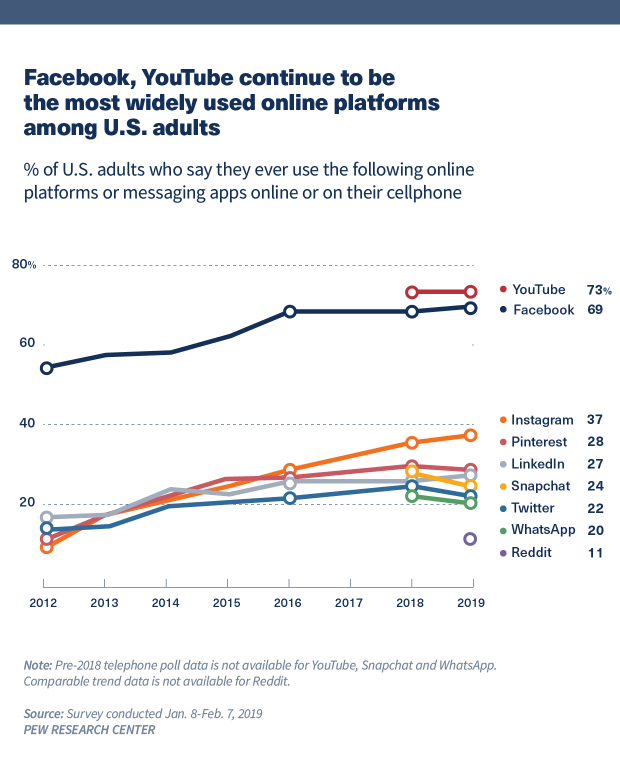
Sidebar: We are guessing Pew does not count YouTube as a ‘social’ platform because it’s a little bit of a chimera: is it a video platform or a search engine or a social network? Most people on YouTube are not actively making videos, although they may be participating in the comments or subscribing to channels (or just revisiting their favorite Vine videos.)
YouTube consistently gets more prevalent the younger the age group you look at.
YouTube itself likes to quote a stat from a study it commissioned several years ago that says on mobile alone it reaches more 18–34 year-olds than any TV network.
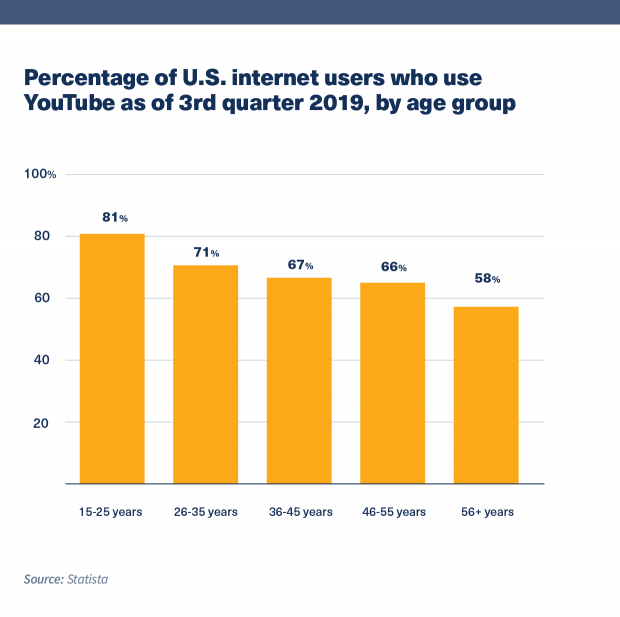
4. Almost 15% of YouTube’s site traffic comes from the U.S.
Pursuant to Alexa’s estimates, YouTube viewers are most likely to be in the U.S. Next runners up: 8.1% of YouTube viewers are in India; 4.6% are in Japan.
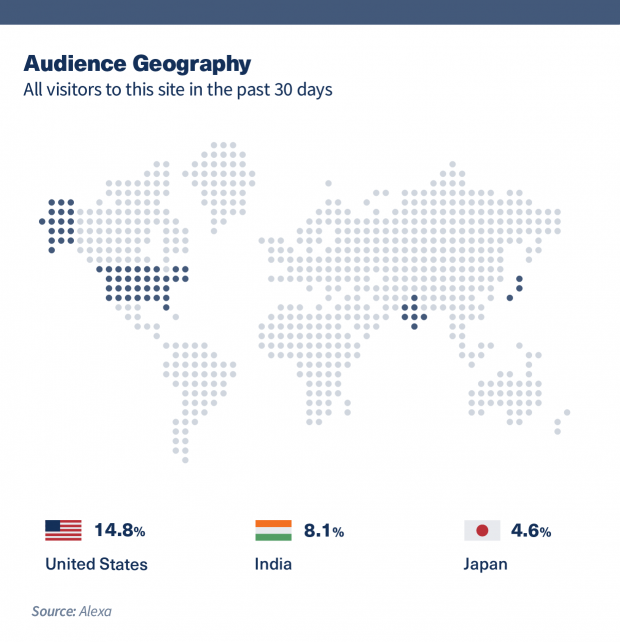
5. 93% of video watchers in India are watching YouTube
YouTube is ubiquitous in its second-biggest market, India, with constant double-digit development every year.
Additionally, compare that to Netflix’s market share in India, which is a really measly 3% of people that watch videos online.
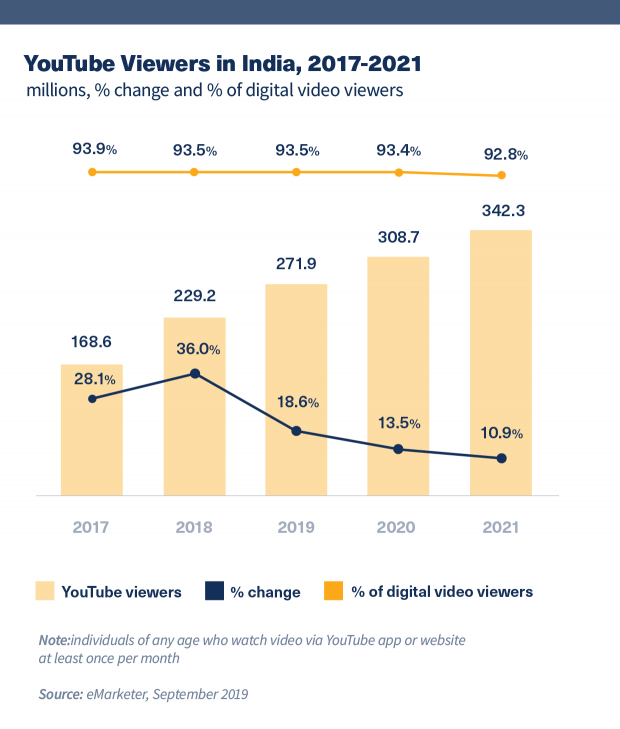
6. Only 33% of popular YouTube videos are in English
When Pew Research looked at activity on prevalent channels (i.e., ones with over 250,000 subscribers) in the first week of 2019, they discovered that only 33% of the videos these channels uploaded were in English, and 17% were fully in English only.
YouTube works in 80 different languages and 91 different countries, so this isn’t actually a surprise.
YouTube usage statistics
7. 500 hours of video uploaded every minute
Competition is fierce out there for creators and brands.
Additionally: our appetite for video content continues to be rising—or at least our appetite for making it. This number has increased by 40% in the 5 years from 2014 to 2019.
8. Each visitor spends 11m 24s per day on YouTube, on average
That is based on Alexa, as of late 2019. And that number is up from the year prior (2018) when it was 8m 41s.
9. 70% of what user watch on YouTube is decided by its recommendation algorithm
Pursuant to YouTube execs, anyway. Independent analysis helps this, with 81% of U.S. users saying they occasionally or regularly watch videos that are recommended by Youtube.
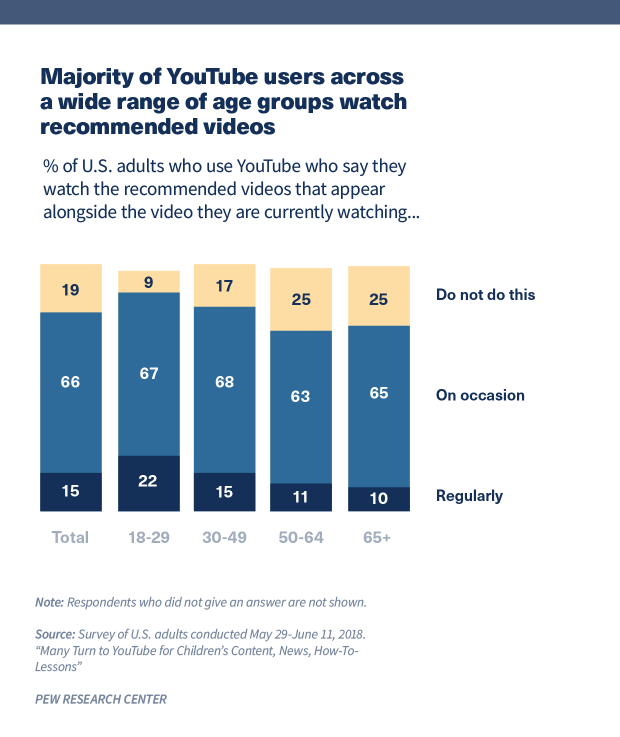
10. Each visit to YouTube involves 6.5 pageviews, on average
Sure, people let the algorithm decide what they will watch. But also, more pageviews suggest more active viewers, as people click around to discover new channels and videos.
11. 10% of the most popular YouTube videos draw 79% of views
Pew Research looked at nearly 44,000 channels with 250,000 subscribers or more, and concluded a small share of videos—and creators—are disproportionately prevalent.
And not only do prevalent channel’s most popular videos grab most of the attention, in terms of the quantity of YouTube videos, but only 10% of Youtube channels also make 70% of the most prevalent videos.
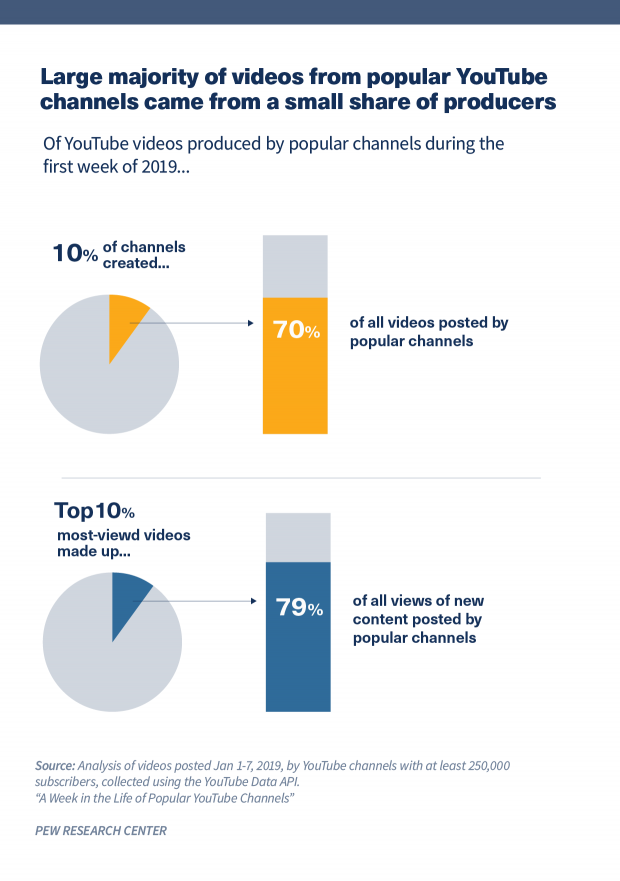
12. Over 70% of YouTube views are on mobile
This number has been steady since late 2018. Either it has not changed, or the great folks at YouTube have determined not to update us. (That mentioned, in 2019 YouTube was the #1 iOS app again.)
We are keeping this here because it’s a vital reminder to keep mobile top-of-mind when making a video.


